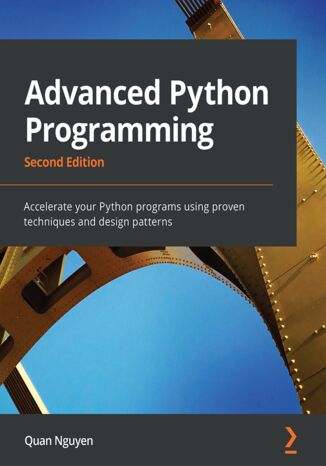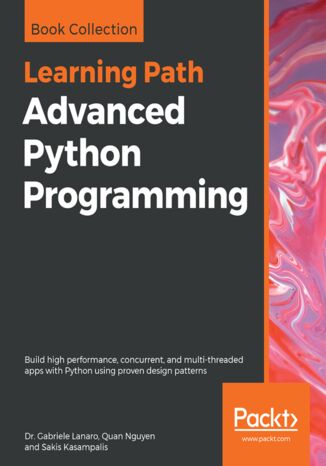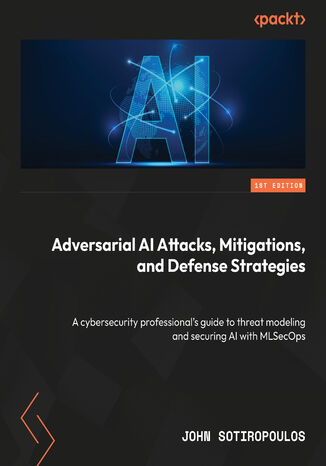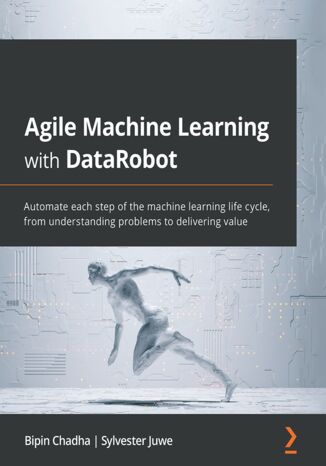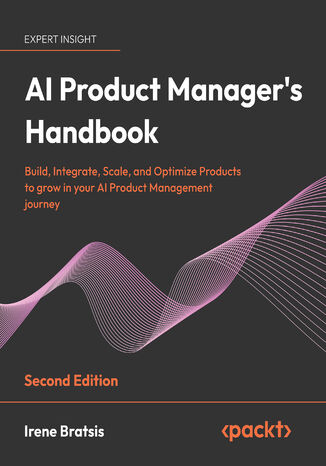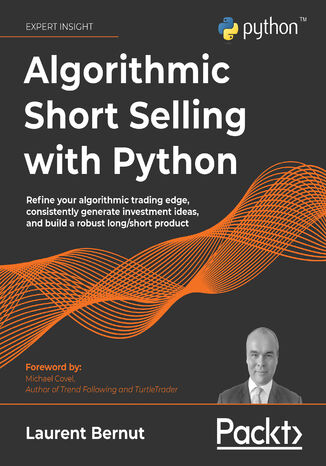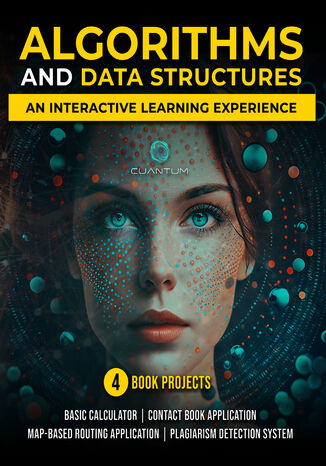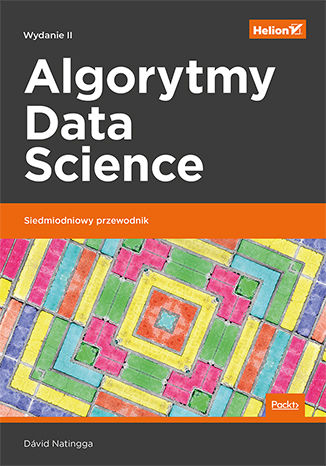Categories
Ebooks
-
Business and economy
- Bitcoin
- Businesswoman
- Coaching
- Controlling
- E-business
- Economy
- Finances
- Stocks and investments
- Personal competence
- Computer in the office
- Communication and negotiation
- Small company
- Marketing
- Motivation
- Multimedia trainings
- Real estate
- Persuasion and NLP
- Taxes
- Social policy
- Guides
- Presentations
- Leadership
- Public Relation
- Reports, analyses
- Secret
- Social Media
- Sales
- Start-up
- Your career
- Management
- Project management
- Human Resources
-
For children
-
For youth
-
Education
-
Encyclopedias, dictionaries
-
E-press
- Architektura i wnętrza
- Health and Safety
- Biznes i Ekonomia
- Home and garden
- E-business
- Ekonomia i finanse
- Esoterecism
- Finances
- Personal finance
- Business
- Photography
- Computer science
- HR & Payroll
- For women
- Computers, Excel
- Accounts
- Culture and literature
- Scientific and academic
- Environmental protection
- Opinion-forming
- Education
- Taxes
- Travelling
- Psychology
- Religion
- Agriculture
- Book and press market
- Transport and Spedition
- Healthand beauty
-
History
-
Computer science
- Office applications
- Data bases
- Bioinformatics
- IT business
- CAD/CAM
- Digital Lifestyle
- DTP
- Electronics
- Digital photography
- Computer graphics
- Games
- Hacking
- Hardware
- IT w ekonomii
- Scientific software package
- School textbooks
- Computer basics
- Programming
- Mobile programming
- Internet servers
- Computer networks
- Start-up
- Operational systems
- Artificial intelligence
- Technology for children
- Webmastering
-
Other
-
Foreign languages
-
Culture and art
-
School reading books
-
Literature
- Antology
- Ballade
- Biographies and autobiographies
- For adults
- Dramas
- Diaries, memoirs, letters
- Epic, epopee
- Essay
- Fantasy and science fiction
- Feuilletons
- Work of fiction
- Humour and satire
- Other
- Classical
- Crime fiction
- Non-fiction
- Fiction
- Mity i legendy
- Nobelists
- Novellas
- Moral
- Okultyzm i magia
- Short stories
- Memoirs
- Travelling
- Narrative poetry
- Poetry
- Politics
- Popular science
- Novel
- Historical novel
- Prose
- Adventure
- Journalism, publicism
- Reportage novels
- Romans i literatura obyczajowa
- Sensational
- Thriller, Horror
- Interviews and memoirs
-
Natural sciences
-
Social sciences
-
School textbooks
-
Popular science and academic
- Archeology
- Bibliotekoznawstwo
- Cinema studies
- Philology
- Polish philology
- Philosophy
- Finanse i bankowość
- Geography
- Economy
- Trade. World economy
- History and archeology
- History of art and architecture
- Cultural studies
- Linguistics
- Literary studies
- Logistics
- Maths
- Medicine
- Humanities
- Pedagogy
- Educational aids
- Popular science
- Other
- Psychology
- Sociology
- Theatre studies
- Theology
- Economic theories and teachings
- Transport i spedycja
- Physical education
- Zarządzanie i marketing
-
Guides
-
Game guides
-
Professional and specialist guides
-
Law
- Health and Safety
- History
- Road Code. Driving license
- Law studies
- Healthcare
- General. Compendium of knowledge
- Academic textbooks
- Other
- Construction and local law
- Civil law
- Financial law
- Economic law
- Economic and trade law
- Criminal law
- Criminal law. Criminal offenses. Criminology
- International law
- International law
- Health care law
- Educational law
- Tax law
- Labor and social security law
- Public, constitutional and administrative law
- Family and Guardianship Code
- agricultural law
- Social law, labour law
- European Union law
- Industry
- Agricultural and environmental
- Dictionaries and encyclopedia
- Public procurement
- Management
-
Tourist guides and travel
- Africa
- Albums
- Southern America
- North and Central America
- Australia, New Zealand, Oceania
- Austria
- Asia
- Balkans
- Middle East
- Bulgary
- China
- Croatia
- The Czech Republic
- Denmark
- Egipt
- Estonia
- Europe
- France
- Mountains
- Greece
- Spain
- Holand
- Iceland
- Lithuania
- Latvia
- Mapy, Plany miast, Atlasy
- Mini travel guides
- Germany
- Norway
- Active travelling
- Poland
- Portugal
- Other
- Przewodniki po hotelach i restauracjach
- Russia
- Romania
- Slovakia
- Slovenia
- Switzerland
- Sweden
- World
- Turkey
- Ukraine
- Hungary
- Great Britain
- Italy
-
Psychology
- Philosophy of life
- Kompetencje psychospołeczne
- Interpersonal communication
- Mindfulness
- General
- Persuasion and NLP
- Academic psychology
- Psychology of soul and mind
- Work psychology
- Relacje i związki
- Parenting and children psychology
- Problem solving
- Intellectual growth
- Secret
- Sexapeal
- Seduction
- Appearance and image
- Philosophy of life
-
Religion
-
Sport, fitness, diets
-
Technology and mechanics
Audiobooks
-
Business and economy
- Bitcoin
- Businesswoman
- Coaching
- Controlling
- E-business
- Economy
- Finances
- Stocks and investments
- Personal competence
- Communication and negotiation
- Small company
- Marketing
- Motivation
- Real estate
- Persuasion and NLP
- Taxes
- Social policy
- Guides
- Presentations
- Leadership
- Public Relation
- Secret
- Social Media
- Sales
- Start-up
- Your career
- Management
- Project management
- Human Resources
-
For children
-
For youth
-
Education
-
Encyclopedias, dictionaries
-
E-press
-
History
-
Computer science
-
Other
-
Foreign languages
-
Culture and art
-
School reading books
-
Literature
- Antology
- Ballade
- Biographies and autobiographies
- For adults
- Dramas
- Diaries, memoirs, letters
- Epic, epopee
- Essay
- Fantasy and science fiction
- Feuilletons
- Work of fiction
- Humour and satire
- Other
- Classical
- Crime fiction
- Non-fiction
- Fiction
- Mity i legendy
- Nobelists
- Novellas
- Moral
- Okultyzm i magia
- Short stories
- Memoirs
- Travelling
- Poetry
- Politics
- Popular science
- Novel
- Historical novel
- Prose
- Adventure
- Journalism, publicism
- Reportage novels
- Romans i literatura obyczajowa
- Sensational
- Thriller, Horror
- Interviews and memoirs
-
Natural sciences
-
Social sciences
-
Popular science and academic
-
Guides
-
Professional and specialist guides
-
Law
-
Tourist guides and travel
-
Psychology
- Philosophy of life
- Interpersonal communication
- Mindfulness
- General
- Persuasion and NLP
- Academic psychology
- Psychology of soul and mind
- Work psychology
- Relacje i związki
- Parenting and children psychology
- Problem solving
- Intellectual growth
- Secret
- Sexapeal
- Seduction
- Appearance and image
- Philosophy of life
-
Religion
-
Sport, fitness, diets
-
Technology and mechanics
Videocourses
-
Data bases
-
Big Data
-
Biznes, ekonomia i marketing
-
Cybersecurity
-
Data Science
-
DevOps
-
For children
-
Electronics
-
Graphics/Video/CAX
-
Games
-
Microsoft Office
-
Development tools
-
Programming
-
Personal growth
-
Computer networks
-
Operational systems
-
Software testing
-
Mobile devices
-
UX/UI
-
Web development
-
Management
Podcasts
- Ebooks
- Programming
- Python
Python
Python's powerful capabilities for implementing robust and efficient programs make it one of the most sought-after programming languages.In this book, you'll explore the tools that allow you to improve performance and take your Python programs to the next level.This book starts by examining the built-in as well as external libraries that streamline tasks in the development cycle, such as benchmarking, profiling, and optimizing. You'll then get to grips with using specialized tools such as dedicated libraries and compilers to increase your performance at number-crunching tasks, including training machine learning models.The book covers concurrency, a major solution to making programs more efficient and scalable, and various concurrent programming techniques such as multithreading, multiprocessing, and asynchronous programming.You'll also understand the common problems that cause undesirable behavior in concurrent programs.Finally, you'll work with a wide range of design patterns, including creational, structural, and behavioral patterns that enable you to tackle complex design and architecture challenges, making your programs more robust and maintainable.By the end of the book, you'll be exposed to a wide range of advanced functionalities in Python and be equipped with the practical knowledge needed to apply them to your use cases.
Dr. Gabriele Lanaro, Quan Nguyen, Sakis Kasampalis
This Learning Path shows you how to leverage the power of both native and third-party Python libraries for building robust and responsive applications. You will learn about profilers and reactive programming, concurrency and parallelism, as well as tools for making your apps quick and efficient. You will discover how to write code for parallel architectures using TensorFlow and Theano, and use a cluster of computers for large-scale computations using technologies such as Dask and PySpark. With the knowledge of how Python design patterns work, you will be able to clone objects, secure interfaces, dynamically choose algorithms, and accomplish much more in high performance computing.By the end of this Learning Path, you will have the skills and confidence to build engaging models that quickly offer efficient solutions to your problems.This Learning Path includes content from the following Packt products:• Python High Performance - Second Edition by Gabriele Lanaro• Mastering Concurrency in Python by Quan Nguyen• Mastering Python Design Patterns by Sakis Kasampalis
Adversarial attacks trick AI systems with malicious data, creating new security risks by exploiting how AI learns. This challenges cybersecurity as it forces us to defend against a whole new kind of threat. This book demystifies adversarial attacks and equips you with the skills to secure AI technologies, moving beyond research hype or business-as-usual activities. Learn how to defend AI and LLM systems against manipulation and intrusion through adversarial attacks such as poisoning, trojan horses, and model extraction, leveraging DevSecOps, MLOps, and other methods to secure systems.This strategy-based book is a comprehensive guide to AI security, combining structured frameworks with practical examples to help you identify and counter adversarial attacks. Part 1 introduces the foundations of AI and adversarial attacks. Parts 2, 3, and 4 cover key attack types, showing how each is performed and how to defend against them. Part 5 presents secure-by-design AI strategies, including threat modeling, MLSecOps, and guidance aligned with OWASP and NIST. The book concludes with a blueprint for maturing enterprise AI security based on NIST pillars, addressing ethics and safety under Trustworthy AI.By the end of this book, you’ll be able to develop, deploy, and secure AI systems against the threat of adversarial attacks effectively.
DataRobot enables data science teams to become more efficient and productive. This book helps you to address machine learning (ML) challenges with DataRobot's enterprise platform, enabling you to extract business value from data and rapidly create commercial impact for your organization.You'll begin by learning how to use DataRobot's features to perform data prep and cleansing tasks automatically. The book then covers best practices for building and deploying ML models, along with challenges faced while scaling them to handle complex business problems. Moving on, you'll perform exploratory data analysis (EDA) tasks to prepare your data to build ML models and ways to interpret results. You'll also discover how to analyze the model's predictions and turn them into actionable insights for business users. Next, you'll create model documentation for internal as well as compliance purposes and learn how the model gets deployed as an API. In addition, you'll find out how to operationalize and monitor the model's performance. Finally, you'll work with examples on time series forecasting, NLP, image processing, MLOps, and more using advanced DataRobot capabilities.By the end of this book, you'll have learned to use DataRobot's AutoML and MLOps features to scale ML model building by avoiding repetitive tasks and common errors.
AI is rapidly transforming product management, presenting new challenges and business opportunities. As AI-driven solutions become more complex, product managers must bridge the gap between technological capabilities and business needs. This book provides a detailed roadmap for successfully building and maintaining AI-driven products, serving as an indispensable companion on your journey to becoming an effective AI product manager. In this second edition, you'll find fresh insights into generative AI, and responsible AI practices with the most relevant tools for building AI-powered products.Authored by a leading AI product expert with years of hands-on experience in developing and managing AI solutions, this guide translates complex AI concepts into actionable strategies. Whether you're an aspiring AI PM or an experienced professional, this book offers a structured approach to defining AI product vision, leveraging data effectively, and aligning AI with business objectives. With new case studies and refined frameworks, this edition provides deeper insights into ethical AI, cross-functional collaboration, and deployment challenges.By the end of this book, you’ll be equipped with the knowledge to drive AI product success with key techniques for identifying AI opportunities and managing risks in a rapidly evolving landscape.
If you are in the long/short business, learning how to sell short is not a choice. Short selling is the key to raising assets under management. This book will help you demystify and hone the short selling craft, providing Python source code to construct a robust long/short portfolio. It discusses fundamental and advanced trading concepts from the perspective of a veteran short seller.This book will take you on a journey from an idea (“buy bullish stocks, sell bearish ones”) to becoming part of the elite club of long/short hedge fund algorithmic traders. You’ll explore key concepts such as trading psychology, trading edge, regime definition, signal processing, position sizing, risk management, and asset allocation, one obstacle at a time. Along the way, you’ll will discover simple methods to consistently generate investment ideas, and consider variables that impact returns, volatility, and overall attractiveness of returns.By the end of this book, you’ll not only become familiar with some of the most sophisticated concepts in capital markets, but also have Python source code to construct a long/short product that investors are bound to find attractive.
Begin your journey with an introduction to Python and algorithms, laying the groundwork for more complex topics. You will start with the basics of Python programming, ensuring a solid foundation before diving into more advanced and sophisticated concepts. As you progress, you'll explore elementary data containers, gaining an understanding of their role in algorithm development.Midway through the course, you’ll delve into the art of sorting and searching, mastering techniques that are crucial for efficient data handling. You will then venture into hierarchical data structures, such as trees and graphs, which are essential for understanding complex data relationships. By mastering algorithmic techniques, you’ll learn how to implement solutions for a variety of computational challenges.The latter part of the course focuses on advanced topics, including network algorithms, string and pattern deciphering, and advanced computational problems. You'll apply your knowledge through practical case studies and optimizations, bridging the gap between theoretical concepts and real-world applications. This comprehensive approach ensures you are well-prepared to handle any programming challenge with confidence.
Algorytmy Data Science. Siedmiodniowy przewodnik. Wydanie II
Data science jest interdyscyplinarną dziedziną naukową łączącą osiągnięcia uczenia maszynowego, statystyki i eksploracji danych. Umożliwia wydobywanie nowej wiedzy z istniejących danych poprzez stosowanie odpowiednich algorytmów i analizy statystycznej. Stworzono dotąd wiele algorytmów tej kategorii i wciąż powstają nowe. Stanowią one podstawę konstruowania modeli umożliwiających wyodrębnianie określonych informacji z danych odzwierciedlających zjawiska zachodzące w świecie rzeczywistym, pozwalają też na formułowanie prognoz ich przebiegu w przyszłości. Algorytmy data science są postrzegane jako ogromna szansa na zdobycie przewagi konkurencyjnej, a ich znaczenie stale rośnie. Ta książka jest zwięzłym przewodnikiem po algorytmach uczenia maszynowego. Jej cel jest prosty: w ciągu siedmiu dni masz opanować solidne podstawy siedmiu najważniejszych dla uczenia maszynowego algorytmów. Opisom poszczególnych algorytmów towarzyszą przykłady ich implementacji w języku Python, a praktyczne ćwiczenia, które znajdziesz na końcu każdego rozdziału, ułatwią Ci lepsze zrozumienie omawianych zagadnień. Co więcej, dzięki książce nauczysz się właściwie identyfikować problemy z zakresu data science. W konsekwencji dobieranie odpowiednich metod i narzędzi do ich rozwiązywania okaże się dużo łatwiejsze. W tej książce: efektywne implementacje algorytmów uczenia maszynowego w języku Python klasyfikacja danych przy użyciu twierdzenia Bayesa, drzew decyzyjnych i lasów losowych podział danych na klastery za pomocą algorytmu k-średnich stosowanie analizy regresji w parametryzacji modeli przewidywań analiza szeregów czasowych pod kątem trendów i sezonowości danych Algorytmy data science: poznaj, zrozum, zastosuj!

